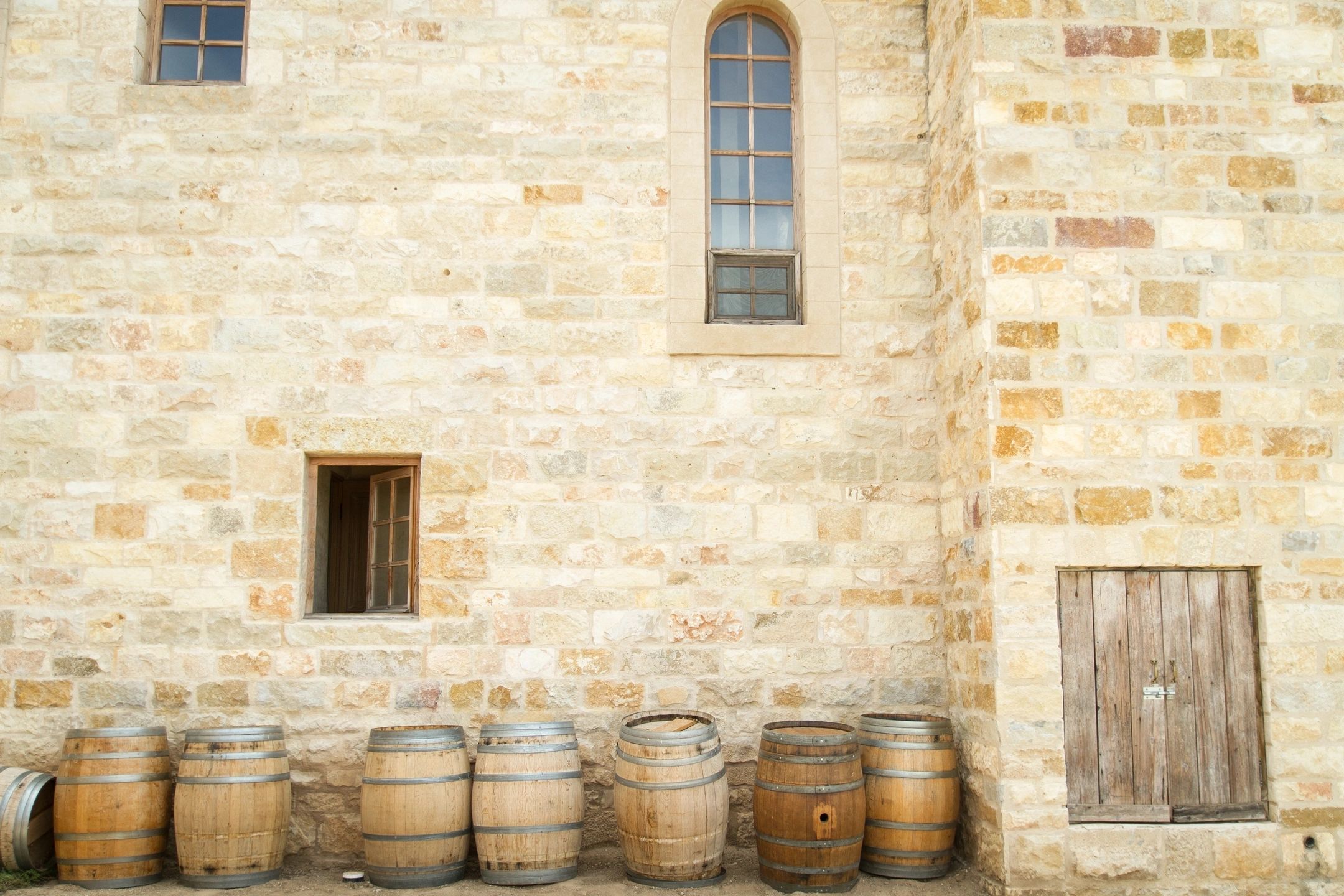The Ultimate Wine Tasting Guide For Tuscany
Italy is synonymous with wine – perhaps that’s why I love there so much. And perhaps nowhere else in the world is embarking on a wine-tasting journey through Tuscany akin to stepping into a living canvas of rolling hills, cypress-lined avenues, and sun-drenched vineyards. This region, celebrated for its rich viticultural heritage, offers an unparalleled experience for oenophiles (wine lovers) and casual wine enthusiasts alike.
Before we dive into my favorite wineries to visit, it’s important to know how to plan the perfect wine tasting trip in Tuscany.
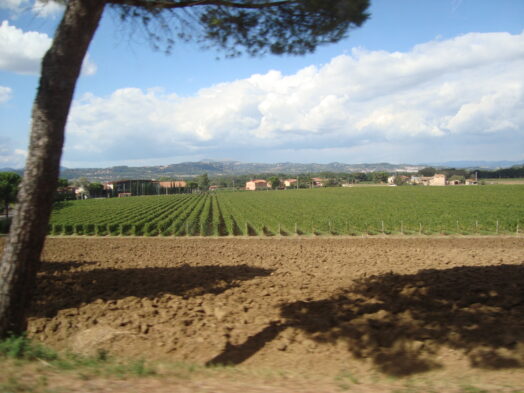
What to Know When Planning a Wine Tasting Trip to Tuscany
Tuscany, with its rolling hills, charming medieval villages, and world-renowned wines, is the ultimate destination for wine lovers. Whether you’re dreaming of sipping Chianti Classico among the vineyards or indulging in a Brunello di Montalcino tasting in an ancient cellar, planning a wine-tasting trip to Tuscany requires some thoughtful preparation. Here’s how to make the most of your journey.
Tuscany Wine Regions
Tuscany is home to some of Italy’s most famous wine regions, each with unique characteristics and wine varieties:
- Chianti Classico – Known for its bold and fruity Sangiovese-based wines (my favorite varietal), this region is dotted with charming villages like Greve and Radda in Chianti.
- Montalcino – Famous for Brunello di Montalcino, a full-bodied red wine that ages beautifully.
- Montepulciano – Home to Vino Nobile di Montepulciano, a refined and elegant red wine.
- Bolgheri – Where the prestigious Super Tuscans are produced, including Sassicaia and Ornellaia.
- San Gimignano – Best known for Vernaccia di San Gimignano, a crisp and refreshing white wine.
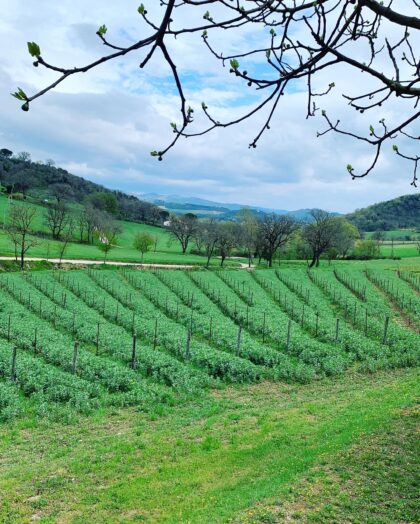
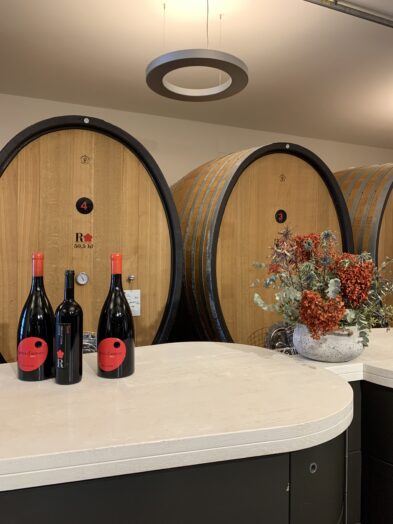
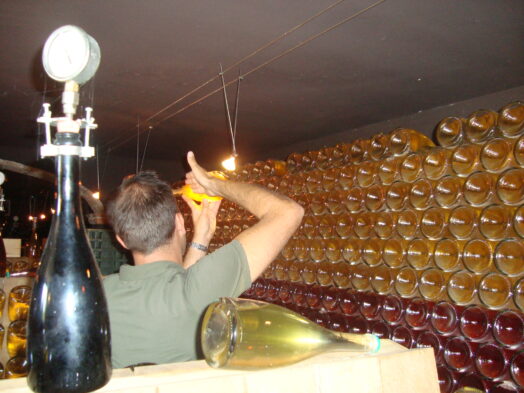
Sign up for the Foodies for Travel newsletter and get a FREE copy of
“The Ultimate Foodie’s Guide to Italy.”
Click here to sign up.
Planning Winery Visits in Tuscany
Many Tuscan wineries require advance reservations for tastings and tours. Research and book appointments ahead of time, especially for well-known estates. Consider a mix of larger, prestigious wineries and smaller, family-run vineyards for a well-rounded experience. Some wineries also offer vineyard walks, food pairings, and cellar tours.
Tuscany’s wine regions are best explored by car, as public transportation options are limited in the countryside. Renting a car gives you flexibility, but hiring a driver or joining a guided tour allows you to fully enjoy the tastings without worrying about navigating winding roads. There’s more detail on moving around Tuscany below.
Read my article on how to taste wines like a pro.
Where to Stay in Tuscany For Your Wine Tasting Trip
Tuscany is a pretty vast region and a bit spread out so you’ll want to base yourself in a central location near the wineries you’ll want to visit. I generally opt for a villa because I like to have my own kitchen – trust me, you’ll be bringing back a lot of provisions to enjoy from your wine tastings. But if you really want to experience Tuscany like a local, opt to stay in an agriturismo, a countryside farm stay. Some wineries also offer accommodations, providing a unique opportunity to wake up among the vines and enjoy farm-to-table meals paired with their own wines.
But here are some great options for more traditional places to stay in Tuscany.
Rosewood Castiglion del Bosco in Montalcino – my ALL time favorite town – is nestled in the heart of the UNESCO-listed Val d’Orcia, Rosewood Castiglion del Bosco offers unparalleled luxury. The estate spans over 5,000 acres, filled with vineyards, rolling hills, and cypress-lined roads. Guests can enjoy wine tasting sessions in the estate’s private winery, relax by the outdoor pool with sweeping views, or indulge in a Michelin-starred dining experience. The accommodations range from elegant suites to private villas, offering the ultimate in Tuscany’s country luxury.
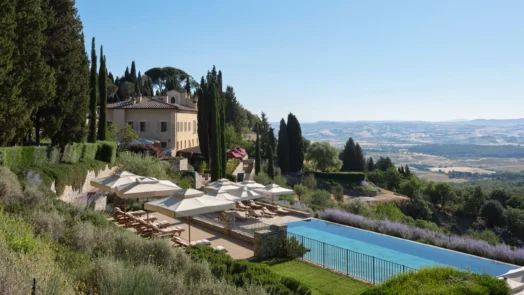
Borgo Santo Pietro in Chiusdino is an exquisite five-star property set in a meticulously restored 13th-century villa. Located in the countryside, it combines Tuscan charm with modern comforts, offering guests a serene escape. The property features beautifully designed rooms, an organic garden, a tranquil spa, and an acclaimed restaurant serving farm-to-table cuisine. Guests can explore the surrounding rolling hills or relax by the heated pool, making it a perfect haven for those seeking relaxation and wellness.
Il Borro Relais & Châteaux in another very cool Tuscany town, Arezzo, is a captivating, historic property owned by the Ferragamo family, Il Borro is a medieval village turned luxury resort. Set on a sprawling 1,700-acre estate, the property offers a range of accommodations from charming rooms in the village to upscale villas. Guests can experience private wine tastings, enjoy fine dining at the resort’s restaurant, or explore the surrounding nature trails. Its idyllic setting, paired with exceptional service and amenities, makes it a remarkable blend of history and modern luxury.
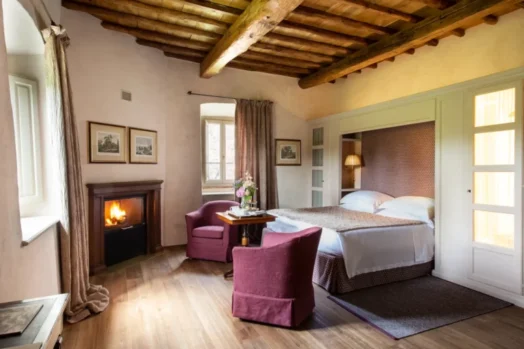
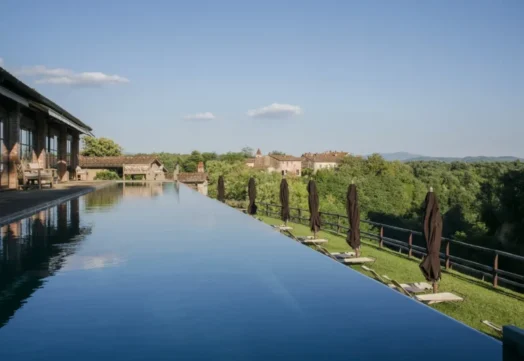
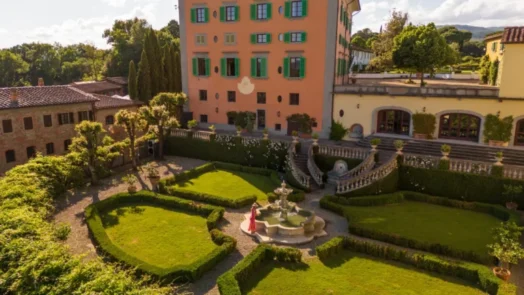
Castello di Casole, A Belmond Hotel is located in the scenic hills of Tuscany, Castello di Casole is a lavish 10th-century castle turned luxury resort. The property offers a combination of restored castle rooms and elegant suites with views of the vineyards and olive groves. A highlight is the expansive 4,200-acre estate where guests can enjoy horseback riding, hiking, or relax by the infinity pool. The on-site restaurant serves gourmet Tuscan cuisine, and the hotel offers an impressive spa for relaxation. It’s the perfect place to immerse yourself in Tuscany’s rich history while enjoying modern comforts.
Villa La Massa is just a short drive from the cultural hub of Florence, Villa La Massa offers a romantic escape on the banks of the Arno River. This former Medici residence combines classic Renaissance architecture with modern luxuries, creating an elegant atmosphere. The property includes beautifully restored rooms and suites with panoramic views, an outdoor pool, and serene gardens. With its proximity to Florence’s art, history, and shopping, Villa La Massa offers the perfect balance of tranquility and access to the vibrant city.
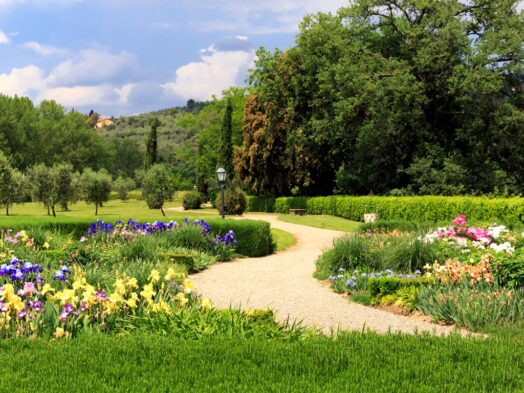
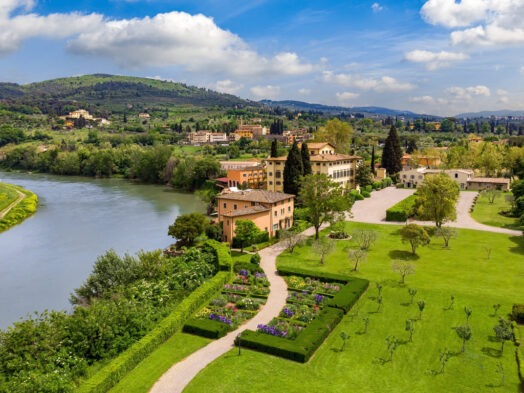
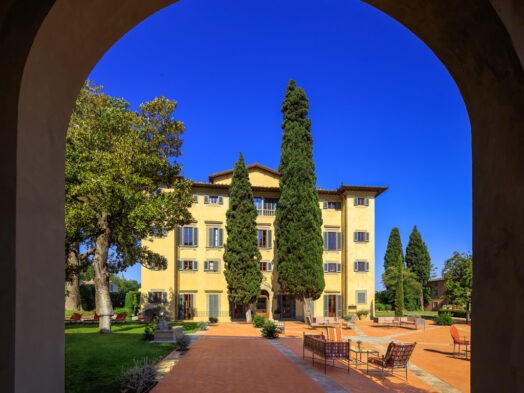
Relais Borgo San Felice is set in a medieval hamlet in the heart of Chianti, Relais Borgo San Felice offers an authentic Tuscan experience. Surrounded by vineyards and olive groves, it provides a tranquil atmosphere with luxurious amenities. The resort features an on-site Michelin-starred restaurant, a wine cellar for tastings, and an array of spa treatments. The elegant rooms and suites are housed in restored stone buildings, and guests can explore the picturesque countryside, making it ideal for those wanting to indulge in Tuscany’s renowned wines and cuisine.
Villa Cora in Florence is an opulent 19th-century mansion perched on the hills overlooking Florence, offering panoramic views of the Boboli Gardens and the city skyline. The villa’s richly decorated rooms and suites feature antique furnishings, elegant frescoes, and modern amenities. Guests can enjoy the villa’s luxurious spa, indulge in fine dining, or relax by the outdoor pool in the beautiful gardens. Its close proximity to Florence’s cultural landmarks, such as the Uffizi Gallery and Ponte Vecchio, provides the ideal setting for those looking for a refined, yet accessible stay.
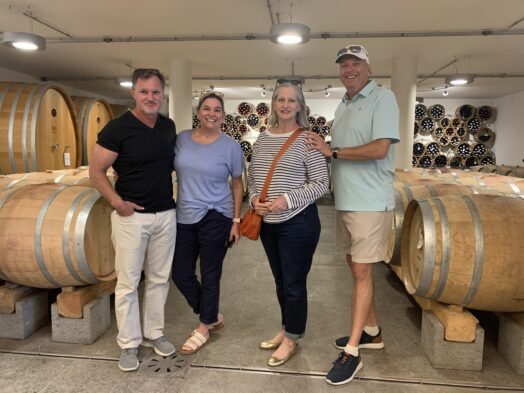
The Best Wineries to Visit in Tuscany
1. Castello di Nipozzano
Nestled in the heart of Chianti Rufina, Castello di Nipozzano is the oldest estate owned by the illustrious Frescobaldi family, whose winemaking legacy dates back to the early 1300s. The castle’s historical significance is matched by its exceptional wines, which once graced the tables of Renaissance artists like Donatello. Visitors can indulge in guided tours of the ancient cellars, participate in vertical tastings of vintage reserves, and explore the estate’s vineyards and olive groves. The combination of history, art, and viticulture makes this estate a must-visit destination.
2. Castello di Ama
Perched amidst the rolling hills of Chianti Classico, Castello di Ama seamlessly blends the worlds of fine wine and contemporary art. The estate, referenced as far back as the 10th century, has been transformed over the past four decades into a showcase of both viticulture and modern installations. Guided tours lead guests through art installations scattered across the property, followed by tastings of their acclaimed wines, such as the Chianti Classico and Merlot L’Apparita. For those seeking an immersive experience, the estate offers luxurious accommodations in renovated 18th-century villas.
3. Badia a Coltibuono
Translating to “Abbey of the Good Harvest,” Badia a Coltibuono is a historic estate that once served as a Benedictine monastery. Today, it stands as a testament to centuries-old winemaking traditions. Visitors can explore the ancient cellars, stroll through the meticulously maintained Italian-style gardens, and participate in cooking classes that delve into traditional Tuscan cuisine. The estate’s restaurant offers farm-to-table dining experiences, perfectly paired with their organic wines.
4. Castiglion del Bosco
Situated in the UNESCO World Heritage site of Val d’Orcia, Castiglion del Bosco is not only a renowned winery but also a luxurious resort. Founded by Massimo Ferragamo, the estate offers guests a holistic Tuscan experience. Wine enthusiasts can tour the state-of-the-art winery, participate in Brunello di Montalcino tastings, and even blend their own wines. Beyond the vineyard, the estate boasts a cooking school, an 18-hole golf course, and a spa, ensuring a comprehensive retreat into Tuscan luxury.
5. Castello di Albola
Located in the picturesque village of Radda in Chianti, Castello di Albola offers a quintessential Tuscan wine experience. The estate’s vineyards, perched at some of the highest elevations in Chianti Classico, produce wines of remarkable elegance and complexity. Visitors can enjoy guided tours of the historic cellars, wine tastings paired with local cheeses, and even truffle hunting excursions in the surrounding woods. The panoramic views from the estate are nothing short of breathtaking.
6. Ruffino 1877
On the hills just outside Florence, in the municipality of Bagno a Ripoli, lies Ruffino 1877. This estate offers a “Ruffino Style” wine experience, blending tradition with modernity. Guests can explore the vineyards, visit the cellars, and partake in tastings that highlight their Chianti Classico, Brunello di Montalcino, and Bolgheri wines. The estate emphasizes organic practices, ensuring a sustainable approach to winemaking.
7. Castello di Gabbiano
With its origins dating back to the 12th century, Castello di Gabbiano is a historic estate that offers a rich tapestry of experiences. Visitors can tour the medieval castle, explore the vineyards, and enjoy wine tastings that showcase their Chianti Classico and Riserva wines. The estate also features a restaurant serving traditional Tuscan dishes, making it a perfect spot for a leisurely lunch amidst the vineyards.
8. Castello Vicchiomaggio
Perched on a hilltop near Greve in Chianti, Castello Vicchiomaggio offers panoramic views of the surrounding countryside. The estate provides guided tours of its historic cellars, followed by wine tastings. One of the highlights is the wine lunch, where guests can savor a multi-course meal paired with the estate’s wines, all enjoyed on a garden patio overlooking the vineyards.
9. Castello della Paneretta
Located in Barberino Val d’Elsa, Castello della Paneretta offers a memorable wine tasting experience in its castle dining room. The estate focuses on traditional Chianti Classico wines, and guests can enjoy private tastings that delve into the nuances of their offerings. The castle’s historic ambiance adds a unique charm to the experience.
10. Castello Banfi
Situated near Montalcino, Castello Banfi is a renowned estate known for its Brunello di Montalcino wines. When I first moved to Italy, this was the first winery I visited. The estate offers comprehensive tours that include visits to the vineyards, winery, and balsameria, where traditional balsamic vinegar is produced. Guests can enjoy wine tastings in a stunning glass-enclosed tasting room with panoramic views of the rolling Tuscan countryside. Castello Banfi also boasts a luxurious hotel and two on-site restaurants, making it an ideal spot for an overnight stay in the heart of Tuscany.
Although technically not in Tuscany, another favorite winery of mine in Umbria is Chiesa del Carmine. Read my story about it here.
Best Restaurants in Tuscany
Wine tasting in Tuscany pairs beautifully with the region’s world-renowned cuisine. Tuscany cuisine is homey, casual, and comforting. Whether you’re looking for a fine dining experience or a rustic trattoria, Tuscany has plenty of incredible options:
Osteria Francescana (Modena) – Although technically outside of Tuscany, this three-Michelin-star restaurant by Massimo Bottura is worth the detour for food lovers. It’s often ranked among the best restaurants in the world, offering innovative takes on classic Italian dishes.
Osteria di Passignano (Chianti Classico) – Set in a former monastery, this Michelin-starred restaurant is surrounded by vineyards. Their tasting menu is a perfect way to experience traditional Tuscan flavors, expertly paired with wines from the Antinori estate.
Trattoria Mario (Florence) – A local favorite, this no-frills trattoria serves up some of the best bistecca alla fiorentina (Florentine steak) in the city. The casual setting and lively atmosphere make it a great place for an authentic Tuscan meal.
La Bottega del 30 (Castelnuovo Berardenga) – This Michelin-starred gem in the heart of Chianti is known for its seasonal ingredients and impeccable presentation. The menu changes frequently, but the homemade pastas and slow-cooked meats are always a highlight.
La Grotta (Montepulciano) – Located near the stunning San Biagio Church, this elegant yet cozy restaurant is the perfect place to enjoy handmade pasta dishes, like pici with black truffle, alongside a glass of Vino Nobile di Montepulciano (another favorite of mine!).
How to Bring Wine Home From Tuscany
I can’t tell you how many suitcases I’ve purchased in Italy to bring home wine and olive oil. Many wineries offer international shipping, but be aware of airline regulations and customs limits when bringing wine home. Investing in a wine travel bag can help protect your purchases. My best tip here? Pack an empty suitcase inside your main suitcase so you can fill it with wine or better yet, purchase one of the suitcases made specifically for traveling with wine.
Getting Around Tuscany
Tuscany’s rolling countryside and charming medieval towns are best explored at a leisurely pace, and there are several ways to get around, depending on your preferences.
Train Travel
If you plan to visit major cities like Florence, Siena, and Pisa, train travel is a convenient and stress-free option. Italy’s regional train system connects most of Tuscany’s larger towns, and high-speed trains can get you from Florence to Rome or Milan in just a few hours. However, many of the best wineries and smaller villages are not easily accessible by train, so you may need additional transportation.
Private Driver
Hiring a private driver is one of the most relaxing ways to explore Tuscany, especially if you plan to visit multiple wineries in a day. Many wine tour companies offer private chauffeured experiences, allowing you to enjoy wine tastings without worrying about driving. This option can be more expensive but is well worth it for those who want a curated, hassle-free experience.
Rental Car
Renting a car gives you the ultimate freedom to explore Tuscany at your own pace. The scenic drives between vineyards, olive groves, and hilltop villages are breathtaking. However, be prepared for winding roads, limited parking in historic towns, and Italy’s infamous ZTL (limited traffic zones) that can result in hefty fines if entered without proper authorization. If you’re comfortable with a bit of adventure, renting a car is a fantastic way to see the countryside.
Best Time to Visit Tuscany
Tuscany is a year-round destination, but the best time to visit depends on what you want to experience.
Spring (April–June) – Spring offers mild temperatures, blooming landscapes, and fewer crowds compared to the summer months. This is a great time to explore wineries and enjoy outdoor activities.
Summer (July–August) – Summer is Tuscany’s peak tourist season, with warm temperatures and lively festivals. However, it can be crowded, especially in Florence and Siena, and some smaller businesses may close for summer holidays in August.
Autumn (September–October) – Fall is arguably the best time to visit Tuscany for wine lovers. The grape harvest (vendemmia) takes place in September and October, and many wineries offer special harvest events and tours. The countryside is particularly beautiful during this time, with golden hues covering the vineyards.
Winter (November–March) – While winter is the quietest season, it’s also the best time to visit if you want to avoid crowds and find great deals on accommodations. Florence and other major cities remain vibrant, and the colder weather is perfect for cozying up with a glass of Brunello by the fire.
A wine-tasting trip through Tuscany is a journey through history, culture, and some of the finest wines in the world. Whether you’re sipping Chianti Classico in a medieval castle or enjoying Brunello in a sun-drenched vineyard, each experience offers a unique taste of Tuscany’s rich heritage. With the right planning—whether by train, car, or private driver—you can create an unforgettable itinerary that captures the essence of this magical region.
Salute! 🍷
Sign up for the Foodies for Travel newsletter and get a FREE copy of
“The Ultimate Foodie’s Guide to Italy.”
Click here to sign up.
This blog post may contain affiliate links, meaning that if you click on a link and make a purchase, I may receive a small commission at no extra cost to you. I only recommend products and services I truly believe in and use myself.

